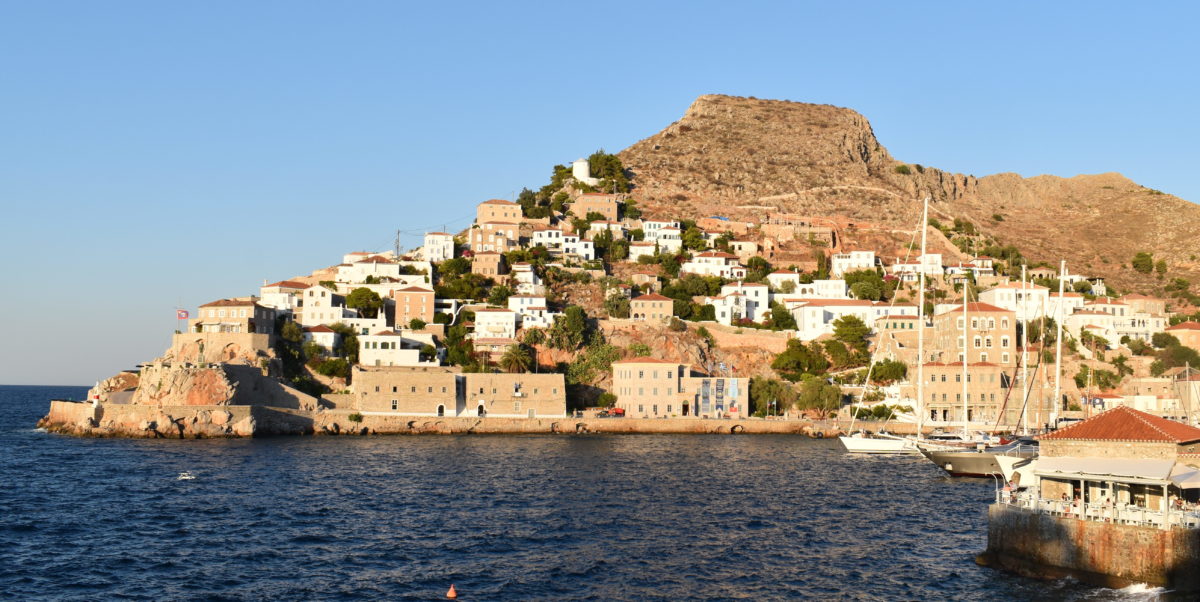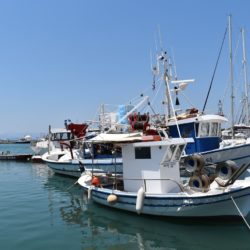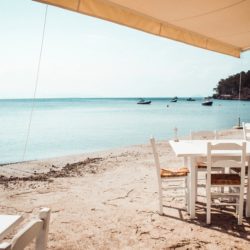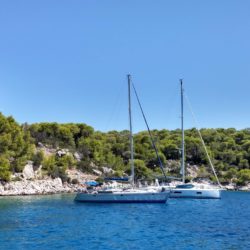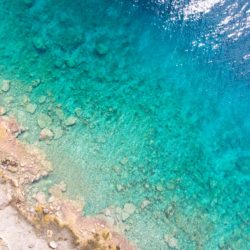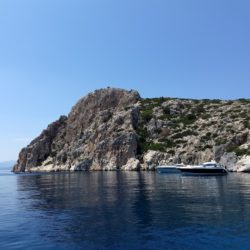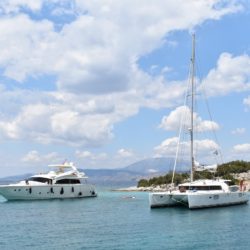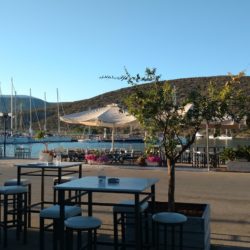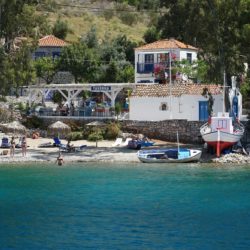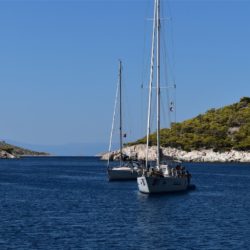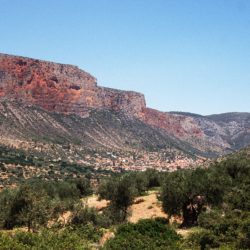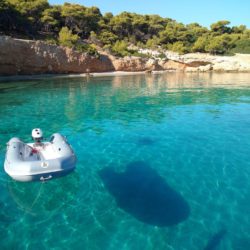MAP & INTRO
The Argo Saronic islands and the East Coast of the Peloponnese are very popular Greek islands for summer sailing holidays and weekend breaks. This is because they are the closest Greek islands from Athens. Aegina, Poros, Hydra, and Spetses have developed a lot in tourism over the last years. Agistri is not that famous and remains a true gem to explore. The crystal water, the relaxing atmosphere, and the long history are the most distinctive characteristics of Saronic Greece, which have a different character each. On the east coast of the Peloponnese Navplion is the capital of the regional unit Argolis and has developed in a cosmopolitan center for the whole region. Other interesting places on the East coast of the Peloponnese are Porto Heli, Leonidio, Ermioni and Epidavros.
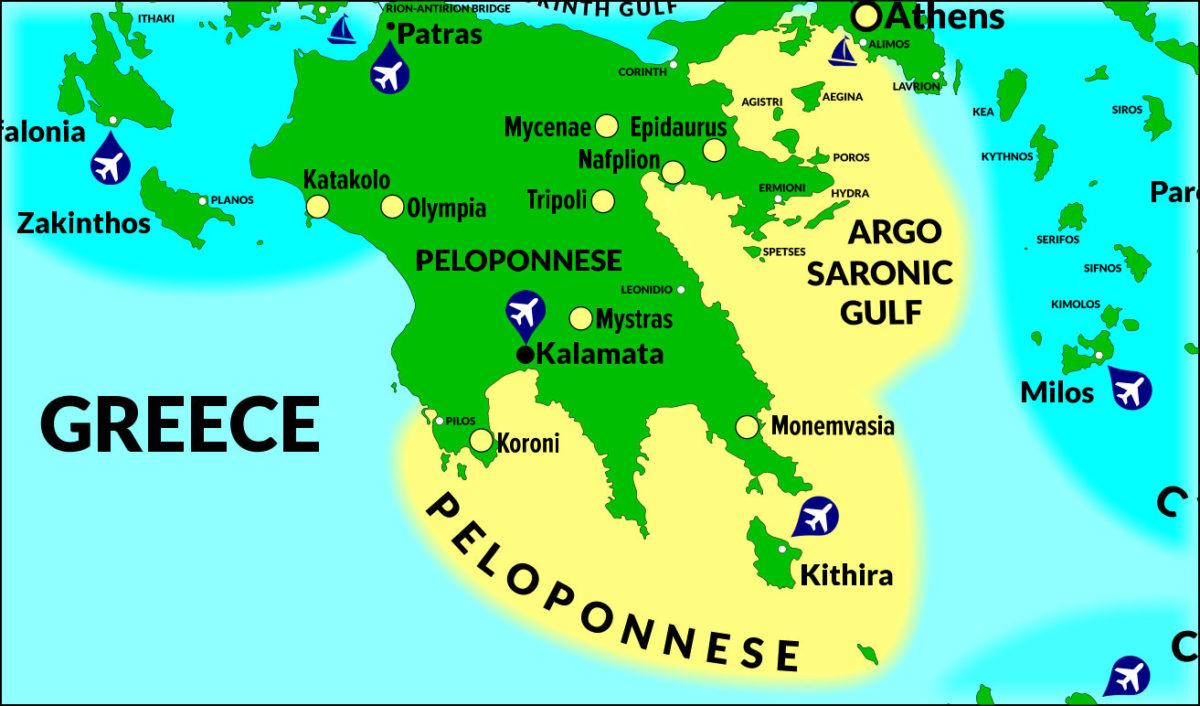
THE BEST WAY TO SAVOR THE ARGO-SARONIC GULF
The Argo-Saronic Gulf and the East Peloponnese offers diversity and history in a small package suitable for a one or two week yacht holiday starting from Athens or Lavrion. This area will be a mix between crystal clean bays, history and
A yacht holiday provides access that can not be achieved in any other way — your floating hotel suite allows you to travel effortlessly and provides access to the finest islands, villages, beaches, and experiences.
WHEN TO VISIT THE ARGO-SARONIC GULF
The islands are at their best in late spring (starting end of April, mid-May) when the landscape is still green, although the sea has not yet fully warmed up for swimming, and when the tourist crowds have yet to arrive. The Argo-Saronic, however, is an all year round destination. During the so-called Meltemi season, when the Cyclades islands are too windy to visit by yacht, the Argo-Saronic is the perfect destination when sailing from Athens or Lavrion.
DESTINATIONS IN THE CYCLADES
When sailing the Argo-Saronic Gulf and Peloponnese from Athens you have three choices to start from; Athens Alimos/Kalamaki Marina, Ayios Kosmas Marina or Lavrion (Port Marina and Olympic Marina). The biggest selection of quality yachts can be found in Athens Kalamaki – Athens Alimos Marina. Lavrion Port Marina or Olympic Marina are situated further south on Attica.
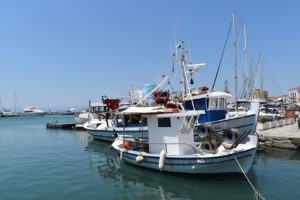
AEGINA
Aegina (Αίγινα, also spelled Aigina or Egina, pronounced he-yee-na) is one of the nearest islands to Athens, the capital of Aegina is also called Aegina.
Aegina can only be reached by boat. As a result, Aegina can be an ideal destination for a single-day round-trip from Athens. Nevertheless, Aegina is worth at least a day of your itinerary, and you may find yourself staying overnight. It is a wonderful island for swimming, eating, shopping, and clubbing.
In addition to the beach-type attractions, Aegina also has a rich history. You can find multiple ancient Greek archaeological sites, such as the Temple of Afaia and the Kolona archaeological site and museum. Moreover, Aegina was the first capital of modern Greece (1826-1827), and you can find historic buildings reflecting this period as well.
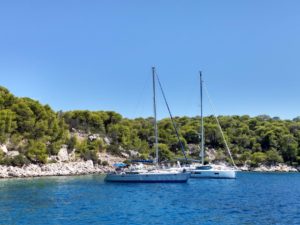
AGISTRI
Agistri is an island in the Argo-Saronicos, close to the island of Aegina. The ancient name of the name was “Kekryphalia”. This means head decorated, because of the pine trees. Agistri island is all green forested, the combination of pine trees and the sea is simply amazing. With residents less than 1000 people, it looks like a well-kept secret. The place is ideal for family holidays, for relaxation and for daily cruises. There many islands around Agistri that can be visited with a boat.
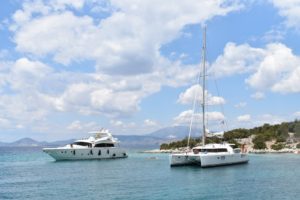
DHOKOS
Dokos (Greek: Δοκός) is a small Greek island of the Argo-Saronic Gulf, adjacent to Hydra, and separated from the Peloponnese by a narrow strait. The island is populated only by some Orthodox monks and perennial sheepherders. The island is rocky reaching a height of 308 meters and is ideal for a swim stop or lunch. Depending on the weather it can be used for an overnight stop as well.
It has, since the ancient years, considered being a strategic location. On the east side lie the ruins of a great Byzantine – Venetian Castle. Dokos, according to archaeological studies, has been inhabited since the era of copper, 6000 BC. In 1975, Peter Throckmorton discovered a wreck near Dokos that has been dated to about 2150 BC and may be the oldest shipwreck known.
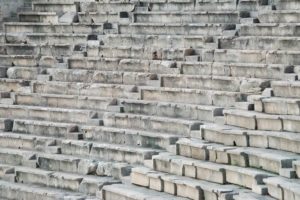
EPIDAVROS
Palaia Epidavros; Greek: Παλαιά Επίδαυρος) is a small town in the Argolia prefecture of the Peleponnese. It is built in the same place where was located the ancient city of Epidauros on top of and surrounding a small peninsula between two bays, on the coast of the Saronic Gulf.
If you are interested in Archeology then this place should be on your itinerary. At the foot of the akropolis of Palaia Epidauros is located the so-called “Small Theatre of Epidauros” (not to be confused with the more famous theatre at the Sanctuary of Asklepios in Epidauros, some 10 km to the South-West). Both can be visited from the port of Palaia Epidavros.
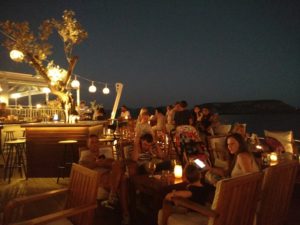
ERMIONI
Ermioni is a small port town and a former municipality in Argolis, Peloponnese, Greece on the Argolid Peninsula. The place has been continuously inhabited, at least since the times of Homer. Long before classical times ancient Hermione was settled by Dryopians. During the classic era it was well known for its shipbuilders and also for the production of porphyra, a very important red dye.
Built amphitheatrically on both sides of a narrow strip of land leading to Bisti, a dense pine forest, Ermioni is a unique town, reminiscent of an island. Wandering along cobblestone streets lined with pretty houses, one reaches the slope of the ancient Pronos hill, with the church of Agias Ermionis at its peak, constructed in an island style on the foundations of a temple dedicated to the goddess Hera.
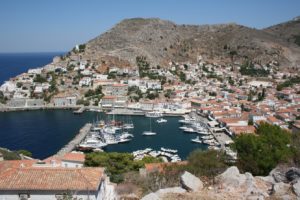
HYDRA
Hydra is one of the Saronic Islands of Greece, located in the Aegean Sea between the Saronic Gulf and the Argolic Gulf. It is separated from the Peloponnese by a narrow strip of water. In ancient times, the island was known as Hydrea, a reference to the natural springs on the island.
There is one main town, known simply as “Hydra port”. It consists of a crescent-shaped harbor, around which is centered a strand of restaurants, shops, markets, and galleries that cater to tourists and locals (Hydriots). Steep stone streets lead up and outward from the harbor area. Most of the local residences, as well as the hostelries on the island, are located on these streets. Other small villages or hamlets on the island include Mandraki, Kamini, Vlychos, Palamidas, Episkopi, and Molos.
Mooring in Hydra Port is a special experience as yachts will moor-up in multiple lines stern-to-bow making getting to land a challenge. Alternatively, you can drop anchor in Mandraki bay and order a high-speed water taxi to bring you to town (or take a 30-minute walk).
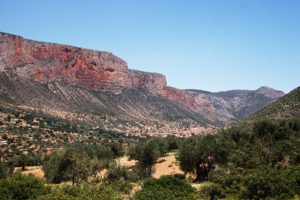
LEONIDIO
The location of Leonidio is as impressive as any town in Greece. It sits at the end of the Dafnon Gorge, a long narrow crevice that follows the Dafnon River through the mountains and comes out at the coastal plain and the sea. Leonidio spreads out along the wide riverbed, a labyrinth of narrow streets and houses mixed with large squares and wide avenues. The town is the economic center for this part of Arkadia, with banks, shops, restaurants and several small hotels in historic houses.
Plaka is the small port of Leonidio, with fishing boats, a few yachts, and sailboats that pass through for the night on their way north or south, and several fish tavernas and cafes. Every August it hosts the “Tsakonian Eggplant Festival”, attracting well-known chefs from across Europe and achieving ever-growing popularity.
Leonidio is also famous for its rock climbing, currently, there are more than 1000 routes across a wide range of grades, and there is still potential for many more.
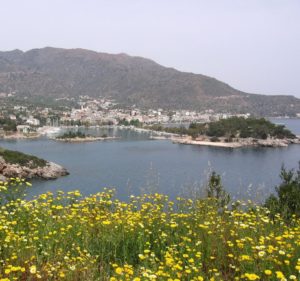
METHANA
Methana is situated on a volcanic (the Methana Volcano) peninsula, attached to the Peloponnese. The peninsula is entirely of volcanic origin and contains over 30 volcanic eruption centers. The last volcanic eruption occurred near present-day Kameni Chora in 230 BC and a submarine volcano erupted in 1700. The Vulcano can be visited and is still active.
There are two ports that can be visited on the Mathana Penisula, the tiny port of Vathi or the main port Methana. Both places have their unique charms.
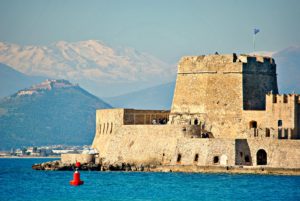
NAFPLION
Nafplio is a seaport town in the Peloponnese in Greece that has expanded up the hillsides near the north end of the Argolic Gulf. The town was an important seaport held under a succession of royal houses in the Middle Ages as part of the lordship of Argos and Nauplia, held initially by the de la Roche following the Fourth Crusade before coming under the Republic of Venice and, lastly, the Ottoman Empire. The town was the capital of the First Hellenic Republic and of the Kingdom of Greece, from the start of the Greek Revolution in 1821 until 1834. Nafplio is now the capital of the regional unit of Argolis.
It’s one of the most beautiful towns in the area of Argolis (in eastern Peloponnese) as well as one of the most romantic cities all over Greece. If you are in for a hike, visit the Palamidi Castle, which proudly stands 216 m above sea level. In order to reach it you have to climb all of its 999 steps carved into the rock. Not to worry, though: the view from above here is totally rewarding!
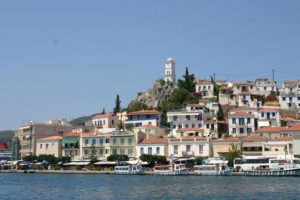
POROS
Poros is a small Greek island-pair in the southern part of the Saronic Gulf, about 58 km (36 mi) (31 nautical miles) south from Piraeus and separated from the Peloponnese by a 200 m (656 ft) wide sea channel, with the town of Galatas on the mainland across the strait.
Poros is an island with rich vegetation. Much of the northern and far eastern/western sides of the island are bushy, whereas large areas of old pine forest are found in the south and center of the island.
Although the seaside invites you to stroll just up and down the restaurants and bars, I would suggest to follow a route through the narrow streets of the town that will lead you up to a hill, where the trademark of the island stands: the historic Clock tower, where you can relax and enjoy a panoramic view of the whole town and Poros bay.
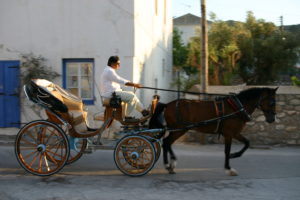
SPETSES
Spetses, an island boasting a long naval tradition, is famous for its significant contribution to the 1821 War of Independence. It was here that the revolution flag was raised on 3rd April 1821. The island has managed to retain its individual traditional character thanks to its well-preserved grand captain mansions, still bearing eloquent witness to the island’s glorious past.
Spetses does not allow private automobiles are within the town limits. The most common modes of transport are walking, horse-drawn carriages, bicycles, mopeds, and motorcycles. Only taxis and delivery vehicles are allowed in the downtown area. Horse and carriage are used as taxi service between Spetses Old Port and the Main Town, its a nice ride along the seafront.
Greek Island yacht holidays provide the best access to the islands of the Argo-Saronics.
You’ll be surprised at how reasonable your private floating hotel suite (yacht with captain and cook/host) is.
Contact us now for a quotation on your magic Argo-Saronics yacht holiday.

SAIL AND STAY
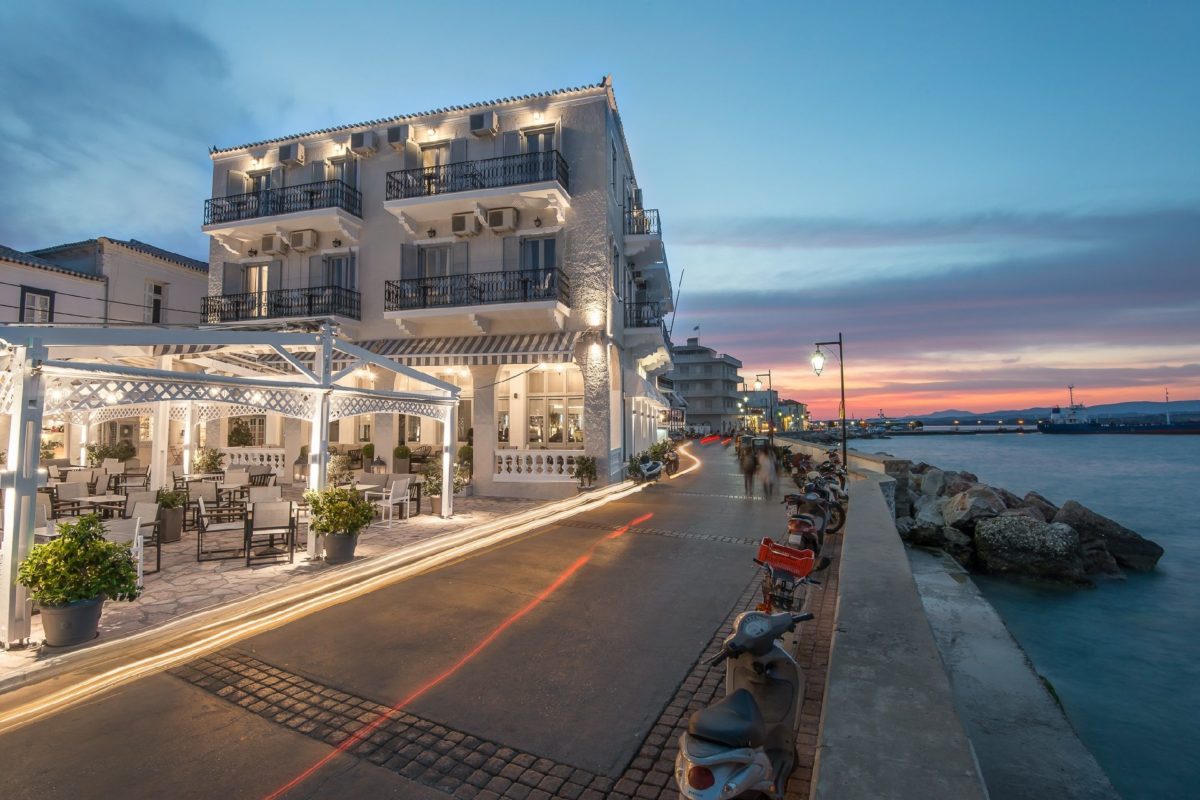
Some of our clients like to extend their Yacht Holiday by staying a few days before or after their cruise in Athens or on one of the islands.
A few days in Athens can be a great holiday starter, and if your group is flying in from different or distant countries this allows you time to catch up and recover from jet lag before your cruise. If you’re interested in history and art you may enjoy a visit to the Museum of Cycladic Art in Athens and the National Archeological Museum that between them house most of the islands best historic art.
We are happy to recommend great places to stay, dine, explore and shop and can book your hotels and arrange airport and port transfers for you.
If you plan to spend some days on one of the islands, here is a brief overview of tourist numbers you can expect to encounter.
TOURISM IN THE ARGO SARONICOS AND EAST PELOPONNESE
Aegina, Agistri, Spetses, Hydra, Poros, Salamina and the peninsula of Methana form the island complex of the Argosaronic Gulf in southern Greece. Sprinkled over the Argosaronic Gulf and steeped in ancient mythology, these islands are small havens in close proximity to Athens. Daily ferry connection from the port of Piraeus makes them a lovely, easily accessible all-year-round destination for the Athenians and tourist visiting Athens for a long weekend. Visitors here will enjoy natural beauty, historical treasures, unique architecture, and glamorous, yet romantic atmosphere.
The three main islands are dominated by tourism season:
- Hydra– is built in the shape of an amphitheater on a slope and is one of the most romantic destinations in Greece. Traditional stone mansions, narrow cobblestoned streets, secluded squares and above all no cars. All means of transport is organized by donkeys and handcars. Hydra preserved its distinctive atmosphere through the passage of time.
- Aegina – The island of Aegina is one of the most popular tourist destinations as it is the closest island to Athens (only 16.5 nautical miles from the port of Piraeus).
- Poros – Lush pine trees vegetation, crystal clear beaches, a lively waterfront adorned with shops and cozy cafes and restaurants make it a perfect place for a short holiday.

ANTIQUITIES
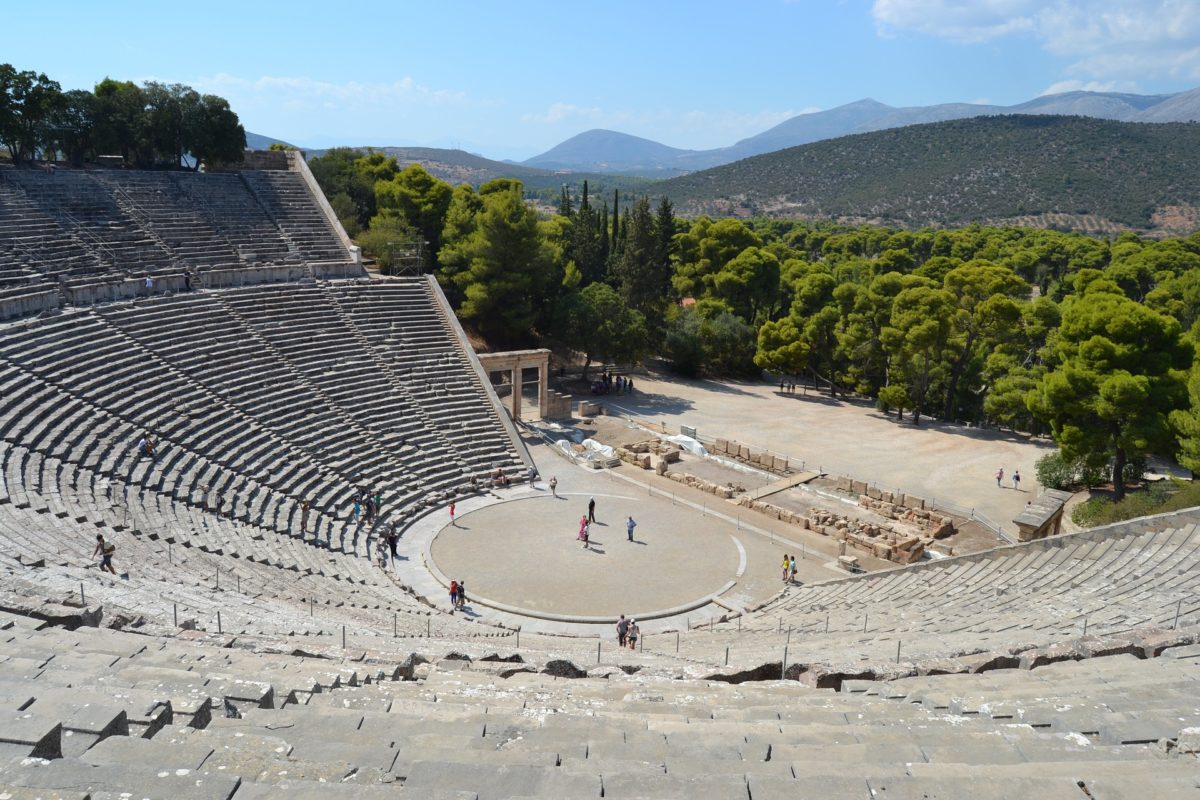
PLACES TO VISIT
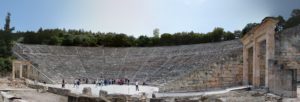
The Great Theatre of Epidaurus
The Ancient Theatre of Epidaurus is a theatre in the Greek city of Epidaurus, located on the southeast end of the sanctuary dedicated to the ancient Greek God of medicine, Asclepius. It is built on the west side of Cynortion Mountain, near modern Lygourio, and belongs to the Epidaurus Municipality.
In a canyon, in 340 BC, an Argos architect Polykleitos the Younger, built, according to Pausanias, the theatre of Epidaurus. Among all the ancient theatres, Epidaurus theatre is the most beautiful and best preserved. Destined for the fun of the patients of Asklipieio, it had a capacity of 13,000 spectators.
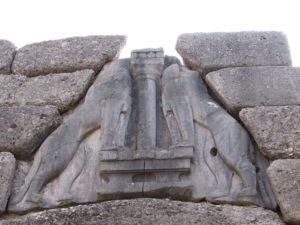
Mycenae, Tiryns and the Mycenaean acropolis of Midea
Mycenae is an archaeological site near Mykines in Argolis, north-eastern Peloponnese, Greece. Mycenae ‘Rich in Gold’, the kingdom of mythical Agamemnon, first sung by Homer in his epics, is the most important and richest palatial center of the Late Bronze Age in Greece.
Tiryns or is a Mycenaean archaeological site in Argolis in the Peloponnese and the location from which mythical hero Heracles performed his 12 labors. Tiryns was a hill fort with occupation ranging back seven thousand years, from before the beginning of the Bronze Age.
Mycenaean Acropolis of Midea is considered as the third most important fortified Mycenaean Acropolis of Argolida, after Mycenae and Tiryns.
Mycenaean Acropolis of Midea is built on top of a conical hill at an altitude of 270 meters from the sea and 170m from the surrounding area .It is located in the middle of the distance between Mycenae and Tiryns dominating the eastern outskirts of Argolida plain.
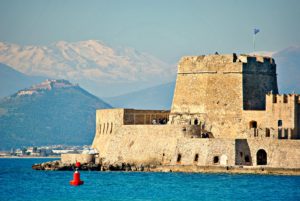
Palamidi Fortress and Nafplio Bourtzi
Palamidi is a fortress to the east of the Acronauplia in the town of Nafplio in the Peloponnese region of southern Greece. Nestled on the crest of a 216-meter high hill, the fortress was built by the Venetians during their second occupation of the area.
The hill of Palamidi, which takes its name from the Homeric hero Palamidis, does not seem to have been systematically fortified until the second Venetian occupation. The construction of the fort was basically carried out during the time of Venetian General Superintendent of the Fleet, Agostino Sagredo, from 1711 to 1714, marking the fort not only as a major feat in terms of its fortifications but also in terms of the speed with which it was constructed.
It was from the Palamidi that the liberation of the city from the Turks began, after a long siege. On the night of 29th November 1822, a unit of Greek rebels, led by Staikos Staikopoulos, launched a surprise attack and seized the Palamidi.
The fort on the sea, which has remained known by its Turkish name ‘Bourtzi’, meaning tower, has become Nafplion’s trademark. The Venetians, having understood the strategic importance of this site for the protection of the port, built a tower on the rock in 1473.
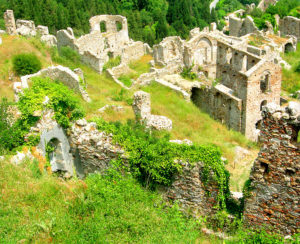
Archaeological Site of Mystras
Mystras, the ‘wonder of the Morea’, was built as an amphitheater around the fortress erected in 1249 by the prince of Achaia, William of Villehardouin. Reconquered by the Byzantines, then occupied by the Turks and the Venetians, the city was abandoned in 1832, leaving only the breathtaking medieval ruins, standing in a beautiful landscape.
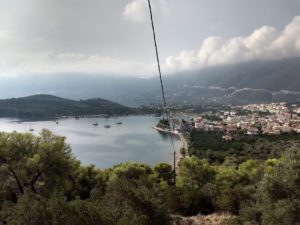
Sunken City of Epidauros
In the shallow waters of ‘Kalymnios’ beach, a small part of the ancient city has submerged. One could see the remnants in the waters either by boat or swimming. In some places, the ancient breakwater is still preserved. It is worth diving at a depth of only two meters to marvel the well-preserved ruins. It is a fact that the sight will leave you filled with awe.


